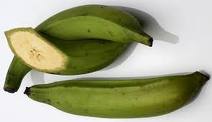BLACK RICE, ORYZA GENUS
Black rice originated in Asia and there are references to its being cultivated in China
Black rice contains the B-complex vitamins, thiamin, riboflavin, niacin, B5 and B6 along with vitamin E and the minerals iron, calcium, magnesium, manganese, copper, zinc, being particularly rich in both potassium and phosphorous. It is also a good source of essential amino acids and other amino acids. The colour comes from the anthocyanin molecules classes as flavonoids, and anthocyanins are known to have potent antioxidant properties which help to protect our bodies from cardio-vascular diseases and cancers. The antioxidant properties of the bran which is removed from the black rice are particularly potent and it has been suggested that this bran would be beneficial if it were used in breakfast cereals and other foodstuffs as it is cheap and available. This would boost our health and also help in the anti-aging process. Anthocyanins and their antioxidant properties can also help prevent Alzheimer’s disease and are thought to slow the deterioration process of this disease, as well as to help people suffering from high blood pressure, high cholesterol levels and diabetes.
 The name anthocyanin comes from the Greek which means ‘blue flower’ and these pigments give black rice its distinctive colour. Today anthocyanins can be purple, black and red, not just blue.
The name anthocyanin comes from the Greek which means ‘blue flower’ and these pigments give black rice its distinctive colour. Today anthocyanins can be purple, black and red, not just blue. In Asia the anthocyanins are extracted from black rice and added to red wine to give it a richer colour, and by doing this the antioxidant properties of the red wine are also boosted. However, in some countries such additions are classed as adulterants, so the wines cannot be sold in countries which classify this addition as an adulterant.
Black rice was called ‘forbidden rice’ in China
Luckily it is now available to the commoners and is grown throughout Asia . In Japan
 There is sticky, glutinous black rice which is used for decoration and desserts in
There is sticky, glutinous black rice which is used for decoration and desserts in Chinese research has shown that it is good for the stomach, kidneys and spleen, as well as the eyes (the vitamin E content would suggest this is so) and blood circulation.
If you compare the benefits of equivalent amounts of blueberries and black rice bran, the latter comes out on top as it clearly contains less sugar than blueberries, and it has more fibre, vitamin E and antioxidant properties. It is also cheaper than blueberries.
When you have a diet that consists of the superfoods such as broccoli, kiwi fruit and other fresh produce, along with whole grains and pulses, you can probably prevent the onset of many diseases, especially if the healthy diet is combined with exercise.
To cook black rice it should be soaked overnight or for quite a few hours then strained and rinsed so that cooking time is reduced to around 30 minutes. If you cook it without soaking it first, be prepared to cook it for an hour to 70 minutes. You should use 1 cup of rice (soaked) to 2 cups of water, and an extra ½ cup of water if it has not been soaked.
Ingredients
1 cup black rice (soaked)
2 cups water
¾ lb prawns (shrimps) shelled and de-veined
¾ lb squid, cleaned and cut into diagonal rounds or pieces
3 cloves garlic, finely chopped
1 small onion (red) finely diced
1 wineglass white wine
¼ pint tomato passata (or fresh pulped tomatoes)
1 inch piece of ginger root, peeled and finely chopped
1 tbsps fresh oregano leaves, torn or shredded
a splash of Tabasco
1 tbsp cumin seeds, dry fried
2 sprigs rosemary
1 bay leaf
Method
Boil the water and when it is boiling add the black rice, bay leaf and rosemary sprigs. Cooked covered over a medium to low heat for ½ hour or until rice is tender.
Set aside, and leave to cool while cooking the other ingredients.
Heat the oils in a pan or wok; you will need 3 parts sunflower oil, 2 of olive oil and 1 of sesame oil. Add the prawns and fry quickly on both sides, 2 mins per side should be sufficient, until they become white-pink.
Strain and drain on absorbent paper.
Fry the squid in the same way. Remove from the pan and drain on absorbent paper.
Fry the onion, garlic and ginger until the onion is soft and translucent.
Pour the wine and tomato passata into the pan, and add the oregano leaves, cumin seeds and freshly ground black pepper. Stir well and incorporate any brown residue in the pan into the sauce.
Drain the rice and pour the sauce on top of it with the squid and prawns on top, or stir the seafood into the sauce and then pour over the rice.
This has Taste and is a Treat.























